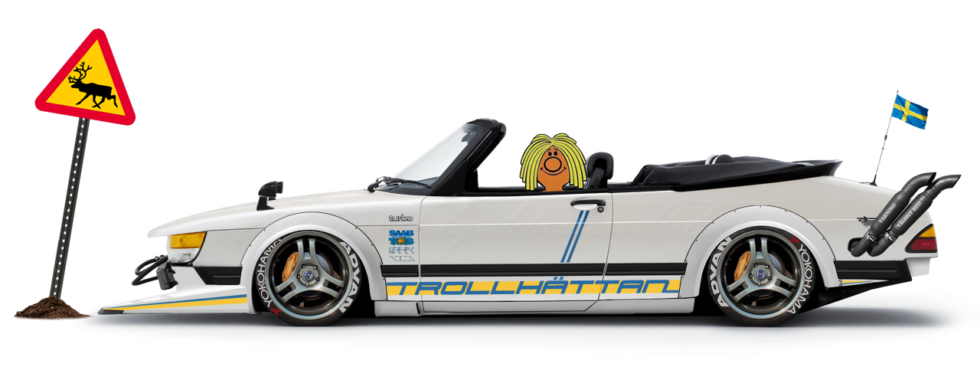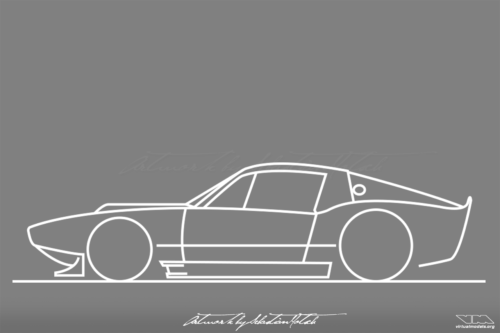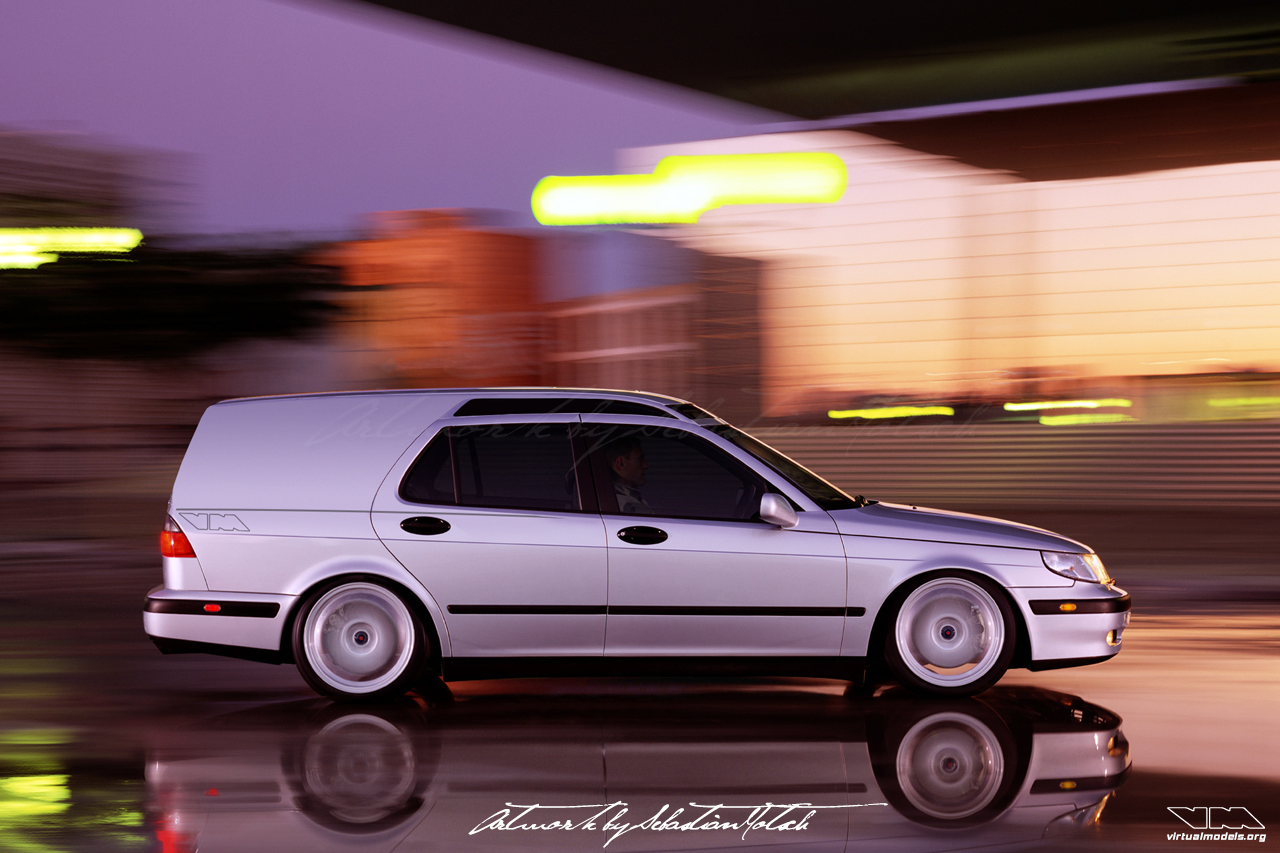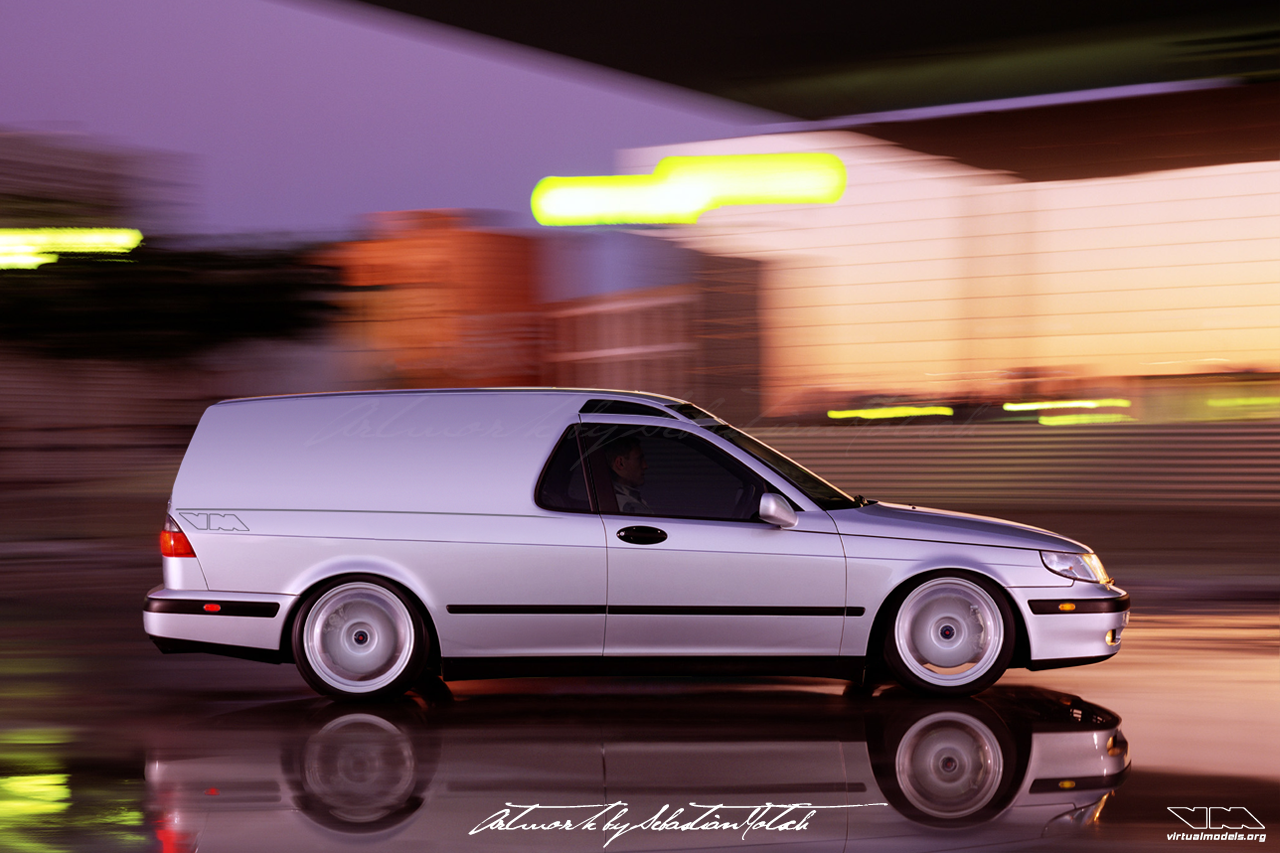28
SAAB 900 Turbo Cabriolet | Bōsōzoku Style
Avid readers of Speedhunters and Japanese Nostalgic Car are familiar with the Japanese outlaw groups called 暴走族 (Bōsōzoku) and their tastefully modified vehicles. Most common base for building such vehicles are 1980’s JDM rear wheel drive sedans and coupés. However, if the owner has identified potential for an idea, just about any car might be used as a starting point and customized in one of these particular styles.
A friend recently challenged me to create a Bōsōzoku inspired photoshop chop. Instead of resorting to the popular base vehicles, I opted to start with the least likely vehicle to be modified in this outrageous style: a safe and sensible Swedish SAAB 900 Turbo Cabriolet. SAAB could be ordered with three spoke alloys from the factory and therefore Yokohama Super Advan wheels suit perfectly. Converting this classic and throwing all the visual key elements into the mix was hilarious fun. Based on the prototype of the convertible, my interpretation of a Swedish Bōsōzoku vehicle includes many elements of Shakotan, Grachan and Bōsōzoku styles. Modified bonnet, oil cooler with externally routed oil lines, custom made sideskirts and massive front splitter, classic JDM fender mirrors, riveted overfenders and wonderfully tacky exhaust setup mounted in an unusual location. But because this is still a Swedish car, there are warnings stenciled onto the pipes. Safety first!
[Disclaimer: This picture was created without any serious thoughts. No SAAB was harmed in the process.]
24
Creating the Sonett I Roadster and the Sonett II Club Racer was tremendous fun and I wanted to add a SAAB Sonett III the collection. Looking at the Sonett III pictures on my hard drive for many months, I struggled to come up with an idea for the conversion. The inspiration finally hit when I found a picture of an old Indy car. Why not convert the Sergio Coggiola and Gunnar A. Sjögren designed four cylinder “sportscar” into a beast with a compact V8? I set to work and came up with the idea of relocating the wheel arches in order to fit some mighty race car rubber under the widened fiberglass body while lowering the overall height. To increase strength, the quarter windows behind the doors have been eliminated and filled in. The rear fenders are re-sculpted and flow into the ducktail spoiler, providing much needed downforce along with the front spoiler. I really like the 1970’s chrome accents on the otherwise more 80’s looking body and kept most of them. The paint scheme is more 70’s orientated: the blue and yellow paint scheme resemble the colors of the Swedish flag and the shape of the yellow stripe mimics the silhouette of a classic glider plane, to add the aeronautics reference typical for SAAB vehicles.
Click here to see the original picture.
11
GM thought it was a brilliant idea to add some Swedish flavor to their rather sad and uninteresting line of mid-size SUVs by introducing the SAAB 9-7X. The 9-7X was a classical GM badge-engineering job with a couple of different trim pieces here and there. It’s not hard at all to guess that the Swedish designers and engineers didn’t have a lot of influence in the development.
Let’s imagine GM would have given free reign to the Swedish colleagues, with the only mandatory requirement that they must build it on an existing platform. They might have come up with what I imagined in the pictures below: a SAAB 9-5 based SuperWagon. It would have featured more interior space, more windows for the kids to see out of during road-trips, better handling and fuel mileage than the horrendous 9-7X. The already spacious trunk space of the 9-5 Wagon would have been enlarged in height and width to fit all the necessary gear a family of four might need for a holiday.
Creating a 2-door delivery van for those needing less seat and more room for cargo would have been rather easy. To keep the distinct SAAB profile, the safety conscious Swedes would have added a window just aft of the B-pillar to improve visibility. Now only one question remains: do you think the SuperWagon variants would have sold better than the GMT360 platform based 9-7X?
Take a look at the original picture for reference.
03
SAAB went out of business in 2011, which made me sad because I always liked the odd and sometimes even weird Swedish cars. Especially the vehicles developed before GM bought SAAB had something that made them unique and therefore special.
SAAB customers of yore have been very loyal and enthusiastic about their brand. Instead of building small amounts of special cars for customers willing to pay more for a SAAB than for any other car, GM watered down the design in order to make the cars appeal to more mainstream customers. The idea of selling more vehicles that way didn’t work out too well, did it? Rightly so, because most people thought the vehicles were not special enough for the price asked. If customers want to drive a car that makes them stand out of the crowd, it doesn’t really make sense to design cars that appeal to a broader audience. The decline of the SAAB brand was slow and painful for enthusiasts. Late in 2011 it was finally over. SAAB – rest in peace.
To honor the “real” SAAB cars of yesteryear, I want to create a series of modified SAAB vehicles in 2012. The first one is the 99 Turbo pictured here. With the base vehicle already looking a little odd, the period correct race car wheels fit perfectly with the mud guards, IMO. The 99 has also been lowered and a couple of parts on the body have been altered. Hey… it could have been like that back then 😉











